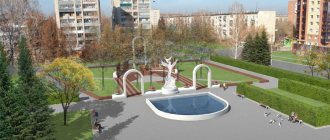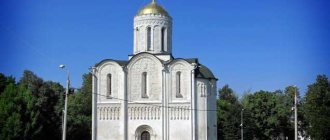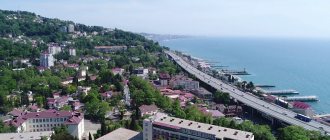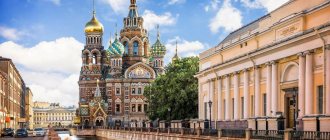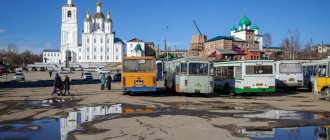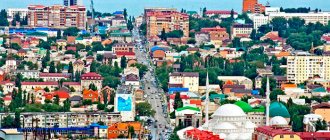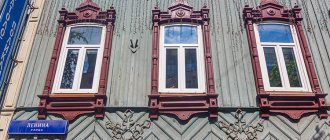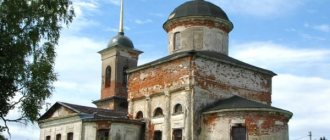Samara is a beautiful, modern city located on the Volga River. At all times of the year it attracts tourists from all over the world. Perhaps there are not many historical attractions, religious and natural monuments, but the city has enough objects that will tell the history of Russia in the 19th-20th centuries.
The longest embankment, green parks, alleys, dozens of museums with unique, rich exhibitions - these are not all the features of Samara. The diverse architectural appearance of the city, which harmoniously combines traditional classics, socialist constructivism, and modern modernism, is attractive.
History of Samara
“Samara Town” - a settlement with this name was founded on the banks of the Volga in 1586. The order to build the city was issued by Fyodor I the Blessed, who wanted to control the territories through which major trade routes passed. The first memories of the town date back to the 14th century. It is named Samar on the map of merchants from Venice.
Fortress "Samara City"
At first, mostly soldiers lived here. Trade is developing in the city, buildings with defensive walls are being built. In 1688, the city received the status of a district and at the same time the name Samara, which has survived to this day. The number of residents reached several thousand. In 1780, government institutions began to be founded here: courts, treasuries, councils. The development plan for the city territory was approved only in 1782.
Samara in the 19th century
In 1850 Samara became the center of the province. Population: 15,000. This figure increases to 90,000 in just 50 years. Bazaars and large fairs are held here, where residents of neighboring settlements come to sell agricultural products, household items, gold and silver items, and textiles. In 1877, a railway was built through Samara, and the local marina received up to 1000 ships a year. Trade is developing rapidly, the city is being actively built up with merchant palaces and estates, some of which have been preserved in good condition.
Samara in the twentieth century and today
The years 1917-1918 were marked by the establishment of Soviet power here. Since 1935, Samara has been called Kuibyshev. After the collapse of the USSR, the historical name returned. During the Second World War, aircraft manufacturing was actively developing in the city, famous military aircraft and attack aircraft were being assembled. Soon enterprises specializing in the development and creation of rockets appeared. The aerospace industry made a major contribution to the formation of the city's economy.
Today Samara is an important economic, cultural, scientific center in which industry is actively developing. In addition, it is an interesting tourist city with an abundance of modern and historical sites.
Tsarev Kurgan
Not far from Mount Tip-Tyav in the village of Volzhsky there is one interesting attraction of the Samara region - Tsarev Kurgan. This natural monument received its name because, according to historical information, the famous Tamerlane celebrated his victory over the Mongolian Khan Tokhtamysh on this hill. In its shape, Tsarev Kurgan resembles a church dome, which has a small chapel on top.
At the top of this monument, archaeologists found ancient settlements and weapons belonging to the Scythians. The southeastern slope of the mound consists of layers of limestone, which leads scientists to believe that Tsarev Kurgan in ancient times was located at the bottom of the sea.
In the 20th century, a cross was erected on top of the mound; residents come to it and pray for the repressed residents of the Samara region.
Location: Volzhsky, Stepan Razin street - 30.
Sights of Samara
There are few historical monuments, but this will not prevent you from having an interesting and exciting time. Visit the gallery, which displays paintings by famous artists. You can walk through museums with unique exhibitions and ancient collections, or stroll along Leningradskaya Street, along the city embankment.
Samara embankment and beach
This is the most popular place among city residents and a must-see for tourists. The length of the equipped embankment is 5 km. It was reconstructed just a few years ago: fountains were installed, new benches for relaxation, a path for cyclists was laid out, and interesting sculptures were installed. You can walk along the embankment endlessly; it is beautiful here, especially on a spring or summer evening.
Zhigulevsky plant
The Zhigulevsky plant is a real pearl for lovers of intoxicating drinks. This is where the famous Zhigulevskoye beer is made. The plant itself is located in a house that is an important architectural monument. Tourists are given a fascinating excursion and are also offered to try a foamy drink. In the store at the factory you can buy several bottles of beer for yourself or as a gift.
Stalin's bunker
Joseph Stalin was very prudent, so he carefully prepared in case of nuclear war. Shelters were established in different cities of the USSR. They were built in dugouts at a depth of several meters. The Samara bunker was declassified only in 1990. The object lies under the building of the Academy of Culture and Arts. The building is not afraid of any external influences and provides the highest degree of protection against bombing. Today excursions are organized here.
"Russia is my history"
An interesting modern facility will open in 2022. The construction of this park was timed to coincide with the World Cup. Of course, you won’t be surprised by archaeological finds and historical exhibits here, but a pleasant experience from visiting the park is guaranteed. Using multimedia technologies, the history of Russia is demonstrated on large interactive screens. Tourists are offered to listen to stories about one or another historical period, watch films and videos, and get acquainted with unique collections of valuable exhibits, although they are presented only in electronic form.
Iversky Convent in Samara
The monastery was created no more than 150 years ago. The monastery still operates today, being considered the oldest in Samara, and is a unique architectural complex that consists of religious shrines, residential buildings, and utility buildings. Pilgrims from all over the world often come here. From afar you are attracted by the sparkling gilded domes of the temples. Several years ago the buildings were restored. The monastery houses the relics of St. Alexander Chagrinsky. There are workshops and a library at the monastery. You can freely walk around the territory of the Iversky Convent, but the cells of the monks are not available for inspection.
Samara Space Museum
Since the Second World War, Samara has served as a rocket science center. Launch vehicles, components for missiles, and ballistic missiles are developed at the local factories. The Vostok model was released in Samara, on which Yuri Gagarin flew into space. The Samara Space Museum is a huge complex consisting of 3 floors. The main exhibition is located on the 1st floor, and additional collections are located on the 2nd and 3rd floors. The institution is open from Tuesday to Friday according to the schedule from 10.00 to 18.00. Saturday and Sunday are shortened working days.
Kurlina's mansion
Kurlina's mansion is a beautiful historical building with Art Nouveau features. This is an important part of the urban landscape of Samara. The estate was described by A. Tolstoy in his novel “Walking Through Torment.” The house was built by order of the wealthy Kurlins. They spared no expense and invested considerable funds in the development of the city’s culture and infrastructure. Today, in the building of the mansion there is a Museum of Art Nouveau, which presents unique exhibitions that testify to the development and formation of the Art Nouveau movement. 100-year-old interiors surprise with their originality and unusualness. They have been perfectly preserved to this day.
The mansion attracts attention at first sight. The façade of the building is lined with spectacular blue tiles, which enchant with their elegant gloss. The overall composition is complemented by a white base and green inserts. Stucco was used as decoration. The pediment is decorated with a sculpture of a woman's head, the windows are decorated with plant stems, and the cornices are decorated with forging in the form of dragonflies and butterflies. On the 1st floor, the typical interior of merchant housing of the 20th century has been preserved. The interior space is divided into a large hall, a dining room, a boudoir, and a study. A separate exhibition consists of expensive household items: elegant accessories, festive and everyday outfits, paintings, dishes and cutlery, luxurious furniture. On the stands accompanying the collection there is an informative explanation with a brief historical background.
Wonderland Park "Galileo"
Galileo is a find for visitors of all ages. Here are the most interesting physical phenomena presented in a fun, accessible way. Among the exhibits, special attention is drawn to:
- a labyrinth with mirrors;
- an upside down room;
- magic balls and other similar attributes;
- a talking head without a body;
- infinite cube, etc.
The total number of exhibits exceeds 50. A guide or consultant will help you understand them; they are in every room. The park also has its own laboratory, where visitors are invited to participate in experiments.
Roman Catholic Church of the Sacred Heart of Jesus
A luxurious, austere religious landmark with tall spiers and severe forms, built in 1906. The implementation of the Moscow architect's project took 4 years. Today this building is known as the Polish Church. The temple was not destined to exist for long. As soon as Soviet power settled on the territory of Samara, the shrine was closed. Valuable historical monuments stored here were confiscated and sold in the 30s of the twentieth century. The temple turned into a deserted place, where over time a children's theater was located, then a cinema and drama school, later a construction club, then an anti-religious museum.
Only in 1991, after the collapse of the USSR, the functionality of the shrine was resumed. And after another 5 years, a major restoration is carried out and the temple is reconstructed. Today it attracts not only believers, but also tourists, because it is an important architectural and religious landmark of the city. You can examine its unique facades from the outside, go inside and admire the original interiors. The Divine Liturgy is regularly served here and concerts of classical and sacred music are organized.
Strukovsky Garden
The oldest and most majestic park in the city of Samara. Guests and locals love to relax here. Clean air, alluring nature, well-developed infrastructure - this is what attracts Strukovsky Garden. For vacationers there are comfortable benches, for cyclists there are equipped paths, for connoisseurs of natural aesthetics there are beautiful fountains and waterfalls. In the center there is a statue of a wild goat, which is considered the symbol of this region. By the way, members of the chess club often organize competitions here. You can just come and play mind games.
House with elephants
You can't pass by the house with the elephants. He's very unusual. The modern building effectively complements the city’s landscape and gives it a special charm. The mansion was built in 1909. Well-known architects of that time worked on the development of design documentation: P. Golovkin, V. Tepfer. Golovkin was also the customer; he was a merchant, was a patron of many cultural objects, and painted pictures. The architecture of the building combines features of Art Nouveau and the Viennese Secession, which is quite unusual for a provincial Russian town of the early twentieth century.
Singing fountains of Samara
Spring and summer evenings in Samara are something exciting and memorable. Take a stroll by the CSKA VVS pool. Amazing singing fountains attract attention here. With their help, light and sound shows are organized. Water jets form atypical shapes that swirl, shimmer, play in different colors, and all this is accompanied by pleasant music. The musical compositions are chosen very well, they play modern compositions and classics (Mozart, Vivaldi, etc.). If you get closer to the fountain, you can get under the refreshing stream. This place is considered one of the most romantic in Samara; couples in love love to stroll here. The embankment near the singing fountains is always fun and crowded, there are performances and street musicians playing.
Samara has something to surprise you with. The city is developing rapidly, characterized by a well-developed tourist infrastructure and an abundance of modern attractions. In Samara you can have a pleasant time at the zoo, indoor water park, cat cafe, and entertainment centers. There are also many restaurants, hotels, and cafes that happily welcome tourists from different regions of the country.
Samarskaya Luka National Park
Fans of natural beauty and outdoor recreation will certainly be interested in the Samarskaya Luka National Park. This beautiful natural place in Samara, located on the Samarskaya Luka peninsula, is known for its unique natural and cultural sites.
The rocky steppes of the Molodetsky Kurgan are covered with legends about Stepan Razin and the mighty Volga heroes.
The beautiful Mount Camel is very popular among rock climbers who try to conquer its peak and enjoy the wonderful view from the observation deck.
An interesting place to visit is the unique landscape complex Stone Bowl, located in a mountain depression. Little visitors to the reserve will definitely enjoy the Aibolit House aviary complex, where they can watch the life of animals and birds. In addition, here you can visit the house-museum of Ilya Repin, the Fox Museum and even the Museum of Ufology. Exciting walking, cycling and horseback riding tours are organized throughout the park, accompanied by experienced instructors.
Samara boat.
To celebrate the 400th anniversary of Samara, local authorities decided to make a gift to the city and its residents. A competition was announced to create a monument that should become a modern symbol of the metropolis. The project of I. Galakhov and A. Yankin was recognized as the best. The symbol embodied in stone has been decorating the Oktyabrskaya Embankment since 1986. The white ancient Russian boat, which has raised its sails, seems to be about to set sail along the great Russian river. For all its massiveness and height of 20 m, the monument looks incredibly light and elegant. Photos of the wonderful monument adorn postcards, calendars, and booklets dedicated to Samara. Address: Oktyabrskaya embankment. Transport stop "Oktyabrskaya embankment".
Theaters
The city's theater bill always amazes with its diversity.
The most unimaginable troupes periodically appear here:
- Dramatic;
- Puppetry;
- Youth theaters;
- Musical;
- Educational.
Even if a city visitor is not impressed by the scene, he must see them in order to imprint them in his memory as unique architectural objects:
- Samara Academic Opera and Ballet Theater. A huge gray building on Kuibyshev Square, built according to the laws of Soviet architecture in the neoclassical style. In fact, it houses a huge academic repertoire and regular international festivals. Location address: Kuibyshev Square, 1.
- Samara State Philharmonic. Despite the fact that the Philharmonic building was built in the difficult pre-war years (1940), it is radically different from the configuration of the Samara Academic Opera and Ballet Theater. You must see this difference with your own eyes. It is located nearby, in the city center, at 141 Frunzenskaya Street.
- Academic Drama Theater named after M. Gorky. One of the oldest drama theaters in the Russian Federation. The year of its foundation varies between 1848 and 1851. The building in which it is located, at the address - Chapaev Square, 1, is classified as a cultural heritage site of the Russian Federation.
half-timbered house
Hidden in the depths of the courtyard on Saratovskaya Street is an amazing half-timbered house. Its design is unique for the Volga region. The frame of the house is a half-timbered structure - a load-bearing open structure made of wood filled with brick. The bay windows and turret, the dark contour of the wooden frame against the background of light plastered walls, are typical of the architecture of medieval Europe.
"The Foreigner" is surrounded by secrets and urban legends. The exact date of its construction has not been established.
What is known for certain is that in 1903 the house, designed in the Art Nouveau style, built by the architect Georgy Mashkov, was acquired by lawyer Osip Girshfeld.
According to archival information, Osip Girshfeld took part in revolutionary activities in his youth and was expelled from St. Petersburg to Samara, where he met Lenin. However, by adulthood he settled down, abandoned the class struggle and took up practice.
Museums
Bunker of I.V.Stalin
This historical site annually attracts hundreds of tourists to Samara. Everyone wants to see for themselves that the bunker really represents an entire city. Today it is the most powerful of the currently declassified and operating bunkers. It is equal to the height of a twelve-story building!
If you are in Samara, be sure to visit this unusual place, intended at one time for I.V. himself. Stalin.
Museum and exhibition
Despite its youth, the Samara Space Museum is an integral part of excursion routes. The first thing that strikes the visitor is the façade of the building, decorated with an authentic Soyuz rocket.
The museum displays a number of real artifacts, components of rocket and space technology and models of rockets.
Along with this, the exhibition contains interactive exhibits that tell about how technology works and how we use space technologies in everyday life.
Another section of the exhibition center is dedicated to man in space.
Recommended to everyone who is passionate about space!
If you have not yet chosen where you will live and want to save money when booking, we recommend using the RoomGuru service. Firstly, it contains hotels, apartments and guest houses from many different booking systems, so you won’t miss out on a worthwhile option. Secondly, you can immediately compare prices for one place in different services and book where it is cheaper (this is not always Booking!).
Samara Art Museum
The Samara Art Museum also attracts with its architecture, since it is located in a very nice and luxurious building of the 20th century, but, most importantly, of course, with its exhibition, including Aivazovsky, Surikov, Repin, Shishkin and Malevich, but the special pride of the museum is the collection of Russian avant-garde 1910-1920 What stands out here is Malevich’s mysterious work “Life in a Big Hotel,” executed in a cubo-futurist style. In this hall there are also many works of other famous artists - for example, paintings by O. Rozanova and M. Menkov. But in the art museum there are many other authors who make up the invaluable collection of the exhibition - this is V. Makovsky, a famous representative of academicism, and landscape painter I. Shishkin , and the brilliant realist I. Repin - they are all here...
Stella Rook"
The Ladya stele, installed on the Oktyabrskaya embankment in Samara quite recently, has already become a symbol of the city. The famous “route from the Varangians to the Greeks” has long run along the Volga; for many centuries, shipping was carried out on boats; Sadko himself sailed on such a ship across three seas, so the successful choice of the “heroine” of the monument predetermined its success. The reinforced concrete stele, 20 m high, is installed on the embankment and looks very elegant both in person and on numerous postcards and souvenirs. A new belief says that the “Boat” captured in the photographs will help the newlyweds get through any storms, so their flow, as well as enthusiastic tourists, does not dry up here, especially since the stele can accommodate up to 200 people “on board”! From the observation deck of the stele there is a view of the Zhiguli Mountains and the picturesque Volga distances.
What else to see
A city with such a rich history as Samara has many truly unique and interesting places. Only a person who directly specializes in attractions can list them in full.
Some of them:
- Singing fountains of Samara. They are located on Orlovskaya embankment. In addition to musical accompaniment, they are equipped with lighting that provokes eyewitnesses to start dancing. The spectacle is unforgettable, as is the embankment itself.
- Samara boat. The monument looks like a passing ancient boat, personifying the long-standing historical heritage of the region. Year of construction: 1986. Since then, the 20-meter monument has been used as one of the symbols of the city. It is located on the Oktyabrskaya embankment and faces the Zhigulevsky Mountains.
- Zhigulevsky brewery. Fans of the foamy drink will certainly want to take a look at one of the very first beer factories in Tsarist Russia. It was built by an Austrian in 1881, which is where the name of the famous Zhiguli beer first came from.
- Observation deck "Helicopter". Upravlencheskiy village, Vetvistaya street - this is the address of the place from which there is an almost panoramic view of the Volga and its surroundings. The hill got its name in Soviet times, when the director of an aircraft factory periodically flew here by helicopter.
Places for walking, tourist streets
The abundance of pedestrian zones, streets and squares will allow you to enjoy the ancient cultural values of the city. Particular attention should be paid to the local Arbat.
Leningradskaya street (pedestrian)
The so-called Samara Arbat starts from the Russian Post building, not far from the embankment and ends a few blocks later. Along its entire length it is full of small cafes, flower beds and architectural compositions from different times.
It mixes modern style, classicism of the Soviet era and strategy used in tsarist times.
Samara embankment (Maxim Gorky St.)
According to many city guests, the embankment is one of the largest and most beautiful among the cities located on the Volga , with clean river air and a panorama of picturesque landscapes.
Moscow highway
Regardless of the fact that the street is quite busy in terms of traffic congestion, it makes sense to walk along it.
Here the tourist will be able to appreciate the unique modern sculptural compositions and attractions of the city:
- Monument to a stormtrooper;
- Zero kilometer;
- Monument to Lovers;
- Monument to the Internet;
- Composition “At the Elephant”;
- Botanical Garden.
Botanical Garden of Samara State University (SamSU)
A state natural monument located on an area of almost 40 hectares.
Here you can see several scientific departments with your own eyes:
- Flora;
- Dendrology;
- Floriculture;
- Tropical and subtropical plants.
Kuibysheva Street
It is considered the main historical street of the city. On the one hand - Strukovsky Garden, on the other - architectural monuments of different times.
Samara Zoo
The Samara Zoo is quite large and interesting, because it houses more than 2 thousand representatives of 200 species of animals. The most striking representatives of the collection of mammals are wild cats: the luxurious Amur tiger, the Far Eastern leopard, lynxes, pumas, jaguars, panthers. The colorful reptiles were brought from different parts of the world, the largest individual being the tiger python. The terrarium contains a variety of frogs and newts of all kinds and various arthropods: spiders, stick insects and cockroaches. There are also aquariums with fish, numerous aviaries with birds... There is a zoo on Novo-Sadovaya Street.
City's legends
The story about Samara will be incomplete if we do not dwell on the unofficial but impressive stories circulating among citizens and tourists.
Greve Brothers Cave
Samara stands on sedimentary deposits of the Cretaceous period. The easily washed away soil creates bizarre cave shapes, one of which is located right within the city.
The cave got its name from the names of two sons of a pharmacist who lived in Samara at the beginning of the 20th century. According to legend, the search for the boys lost in the cave took two weeks. They found only one, but he also ended his days in an insane asylum. And the second one still wanders in the depths of Sokolya Mountain and scares impressionable speleologists.
The cave is a natural monument of regional significance. The total length of the labyrinth is more than 700 m. The cave has many branches and grottoes. We recommend going there only with a guide.
Treasure of Stepan Razin in the Zhiguli Mountains
Stepan Razin was a robber. In those days, robbing river merchant ships on the Volga was extremely profitable. Having settled in Samara, the bandits used the Zhiguli Mountains as an observation deck. From above, the target moving along the river was clearly visible. While the ship makes a loop along the Samara Bow, the bandits are already waiting for it downstream. The loot was taken into numerous caves. Shall we look?
Stone Zoya
It’s amazing how the story about a daring Komsomol member who, in the absence of her gentleman, decided to dance with the icon of St. Nicholas the Wonderworker and was petrified for 128 days, was passed on from mouth to mouth and reached the farthest corners of the Union. But the fact remains that the entire USSR knew the story of “Zoya’s Stand.” And it happened here, in Kuibyshev, on the street. Chkalova, 84. If you have time, come in and look at the eerie abandoned house in the private sector and the chapel of St. Nicholas the Wonderworker next to it.
Where did the name come from
It is known that the toponym Samara comes from the Scythian Samarchus and was first found in the chronicles of the French medieval philosopher Hugh of Saint-Victor.
Moreover, the city marked on the map of Scythia, according to the philosopher, was under the control of two sovereigns - Christian and pagan. Messire Hugo can only be confirmed or refuted through archaeological research. So, dear travelers, go ahead and get Scythian gold. In the end, Herr Schliemann excavated Troy, also relying solely on faith in the veracity of the events described in the Illiad.
